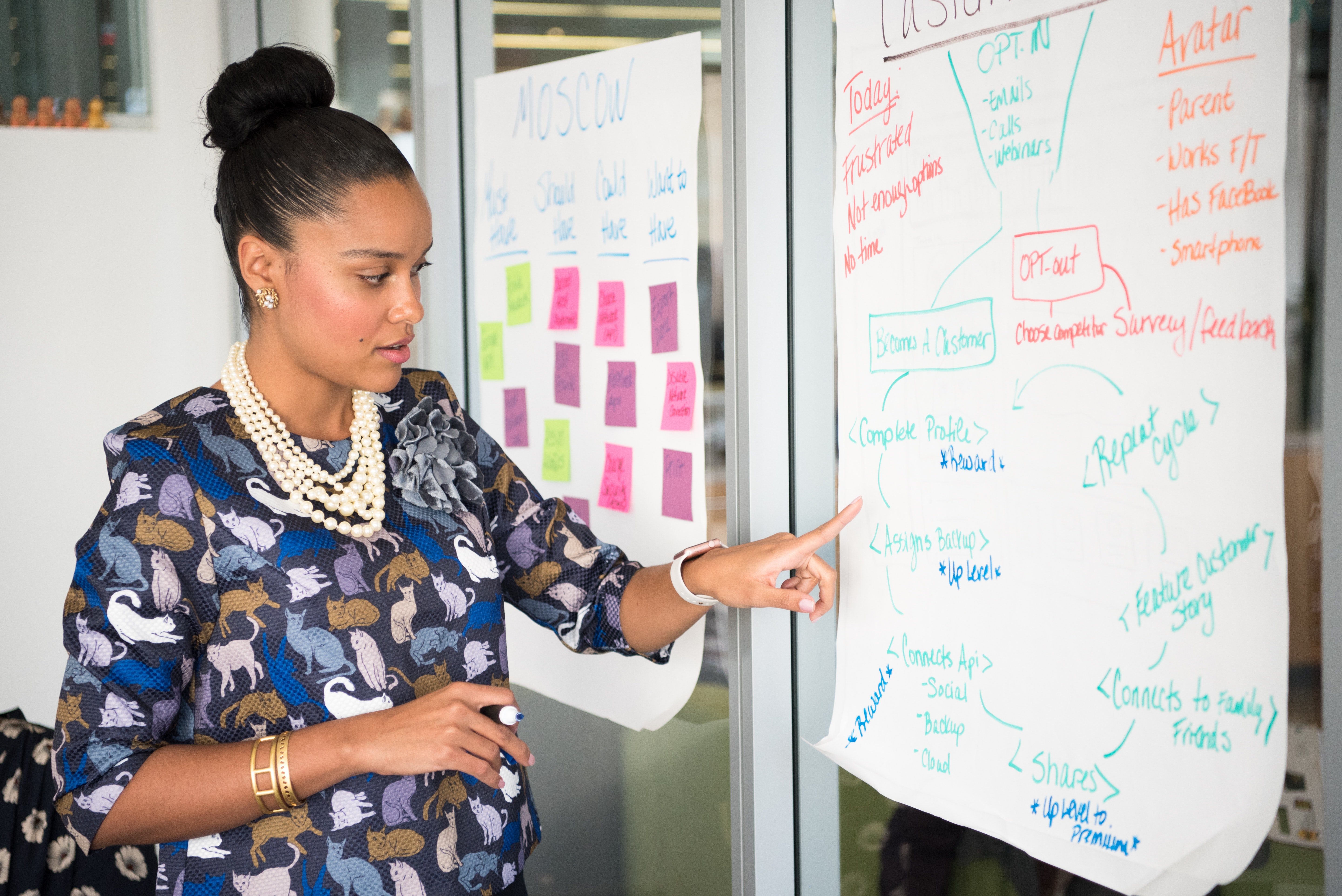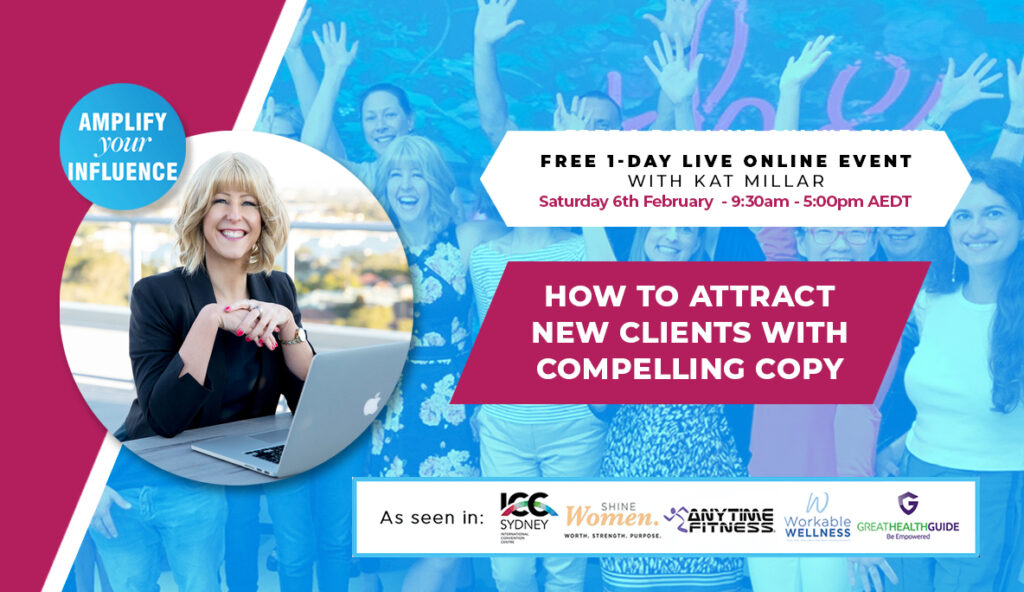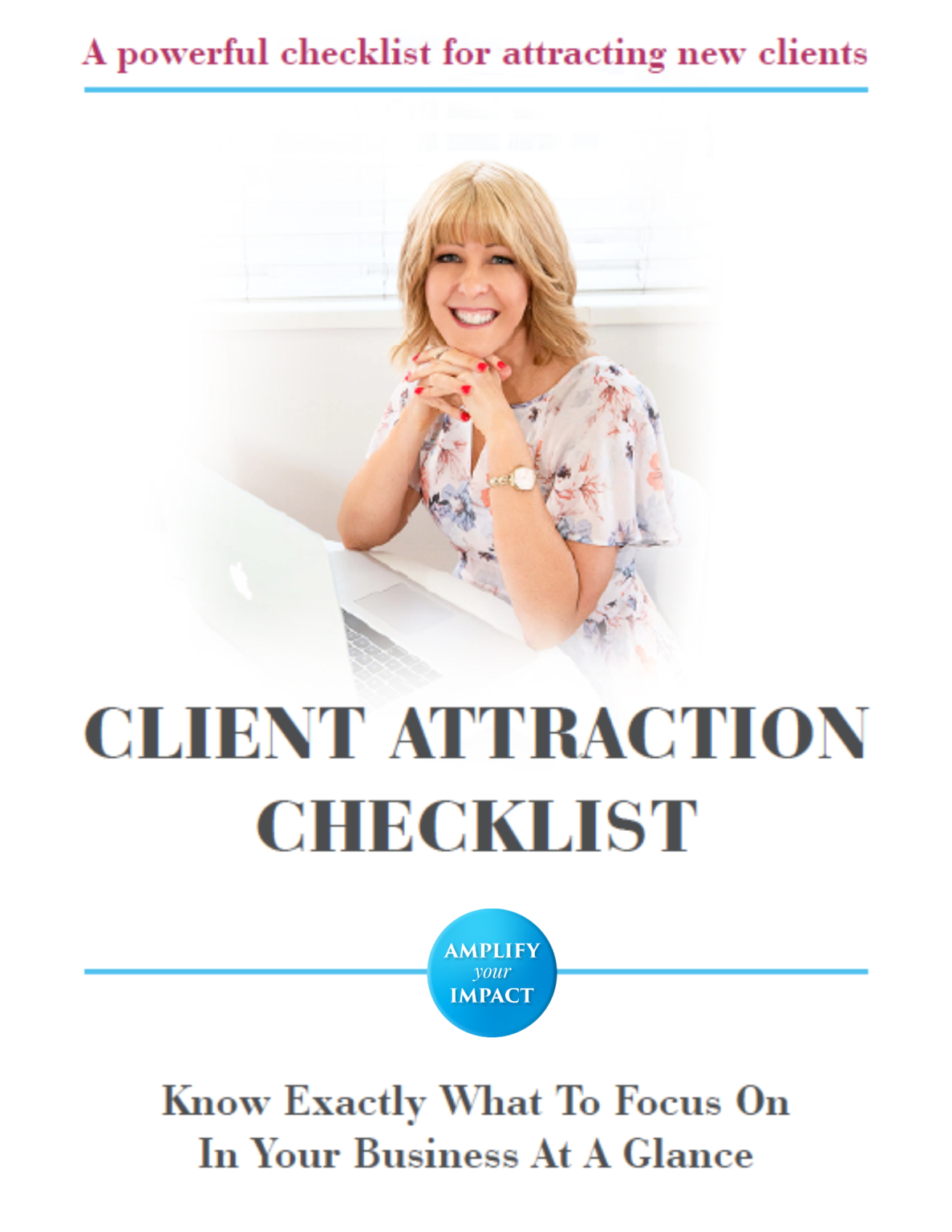In business, we all make mistakes. I’ve made hundreds… and some were absolute pearlers.
When I first started out in business 18-years ago, I didn’t have any qualifications, business knowledge, or money. I just had a lot of enthusiasm, drive, and a willingness to do whatever it takes to succeed.
I was much younger, more stubborn, and ignorant back then. I look back and see how much faster I could have propelled my growth if only I knew what I know now.
Making mistakes is normal and it’s one of the ways we learn and grow. But there are some mistakes that are unnecessary and waste precious time, money, and energy.
So I’m going to share with you how to avoid some of the mistakes that can trip you up and fail and what to do instead.
Here are the top 5 things I wish I’d know when I first started out in business…
1 – The Value Of Investing In Coaching and Mentoring
A mistake I made when I started out, was that I didn’t value other people’s input who had been in business longer than me.
If someone asks why I’m successful – it’s hard work, a strong work ethic and dedication etc. but the number 1 reason absolutely comes down to investing in coaching and mentoring.
When I was younger, I was so stubborn and naive.
I started my first job in insurance when I was 17 as an office junior (earning a whopping $17,000 a year)
I didn’t have a clue what I wanted to do, I just wanted freedom when I left high school.
When I was 25, I left my office job when I decided to become a personal trainer. I didn’t know anything about sales or marketing.
I could have seeked help from the experienced personal trainers at the gym I worked at. I could have taken them for coffee to ask for their advice. But I didn’t. Maybe I thought I knew everything. ?
 I wish I knew the power of mentorship and coaching back then.
I wish I knew the power of mentorship and coaching back then.
One of my favourite mentors says the fastest way to succeed in business is to attach yourself to a fast-moving vehicle, and do what they’re doing. Stand on the shoulders of giants and don’t try and reinvent the wheel.
Once I realised the power that they bring you, I’ve always had multiple coaches and mentors.
Some people say to just have one mentor or one mentor per year. Everyone’s different, it’s totally dependent on your style, personality, and character. I invest in multiple. I’m coach-greedy.
Without mentoring and coaching, I would not be where I am today.
The CEO of Google has a coach. Every great athlete, ca,tor or actress will have people around them that are supporting them and coaching them. If they need coaching and mentoring, then so do we.
2 – The Value Of Networking
When I started out in business I was so such an introvert. I hid behind my laptop and my phone. In fact, some people that knew me back 10 to 12 years ago, would say they knew a completely different person.
A lot of people who knew me back then have been telling me lately that they have seen my transformation. Anyone can change. Even if you are an introvert, you can get out there and network. I never used to network, in fact, I hated it.
When I moved from New Zealand to London, I realised that I desperately needed to improve my communication skills and my confidence, so I read books on the plane. I bought books on how to become confident. And I learned one very important thing. I learned that you don’t get confident from reading books.
You become confident by getting out there and confronting your fears. Confidence is a by-product of being competent.
When you’re facing the fears of things that challenge you, you’re moving to your next level and outside of your comfort zone. When you do that, confidence comes like a gift and a reward for doing hard things.
 Networking for a lot of you is not easy, and you feel like you’re not good at it. I network a lot and some people are really bad at it! They are not present, not listening, and not hearing what you have to say. They are half distracted.
Networking for a lot of you is not easy, and you feel like you’re not good at it. I network a lot and some people are really bad at it! They are not present, not listening, and not hearing what you have to say. They are half distracted.
You only get good at networking by doing it. When I started networking, I would hang around the food table because it was my comfort. It was like a blanket. Now, I try and meet as many people as I can.
I don’t give out business cards. That’s one mistake people make. I was at an event recently and I went home with a stack of business cards. I don’t have business cards and haven’t had them for eight years. I don’t have them because I like making contact with the other person.
When I was a personal trainer, I handed out hundreds and hundreds of business cards. Let’s be honest, most business cards end up in the bin. I only keep people’s business cards if I make a connection with the person.
If you’re not putting yourself out there, and networking, now is the time to do it. Because of the pandemic, people are now getting out and the energy is amazing. I can feel my energy has shifted so much since I started going to more live events.
Have a look at Meetup.com or Eventbrite as there are a bunch of events happening. Challenge yourself to get out there and network. The only way you get better is by doing it.
3 – The Value Of Investing
My third mistake was not realising the value of investing in my business. I used to try and hold on to money, whereas I’ve come to the point where I invest, because that’s the way to grow.
I invest in 3 main things – marketing, coaching and education.
You don’t get wealthy by saving money. You get wealthy by getting your money working for you. And so, I love investing money into marketing, like Facebook ads.
I also love putting money into education. I’ve spent over $130,000 on education, not on formal education, but through learning specific skills.
Back when I started in business, I wish I had known the value of investing in marketing, sales copywriting, and coaching skills. I never used to think of copywriting as an essential business skill. I just thought I could put up a post and people were going to sign up.
 Copywriting is one of the most undervalued, underrated skills, but being able to write well is one of the most important skills.
Copywriting is one of the most undervalued, underrated skills, but being able to write well is one of the most important skills.
Knowing how to craft your language in a way that is compelling and attracts your right clients is a skill and it’s one that is worth investing in.
In the past, I’ve printed off flyers but now I mostly do all my marketing online because it enables you to track and see the ROI on your marketing dollar and investment.
If you’re starting out in business or you are struggling in business, you always need to be investing.
4 – The Value Of Daily Income Generating Activities
All of us do low-value tasks. We are human. Our brain is wired to take the path of least resistance.
Our brain is wired to keep us safe, so it doesn’t easily accept change. We naturally want to follow the path of least resistance. It’s really natural for us to do the easy things.
You know you need to go to the gym, but you stay watching Netflix. It’s normal so please don’t beat yourself up. This is not about making you feel guilty.
I do want to challenge you and encourage you to spend a good proportion of your time on income-generating activities. Ideally, do them every morning.
Instead of waking up and consuming on social media, create something. Delete apps off your phone if you need to. I have recently deleted the email app off my phone so I don’t waste time on it.
One of the easiest ways to change a habit is to just remove it. I always taught my clients this when I was a weight loss coach. At the time I was helping people change their habits. I would tell them that they needed to remove everything unhealthy from their house, so they didn’t get tempted.
If you’ve got a problem with sugar, don’t put things with sugar into your shopping trolley. Make up healthy packs of veggies or nuts and keep them in your bag. Don’t end up buying crappy food because you’ve gotten stuck out somewhere without being prepared.
It’s the same thing with business. Remove all things that take you away from income-generating activities. Are you tracking your sales conversion rates? Are you showing up and giving value rather than just consuming?
Entrepreneurs show up and give value and help others solve problems. Entrepreneurs do income-generating activities.
I wish I knew that earlier because I spent way too long faffing about making my PowerPoint slides look amazing.
5 -The Value Of Fast Decision Making
Do you fall into the trap of perfectionism? 
None of us wants to make mistakes in our work. We don’t want to fail.
But overcoming perfectionism is not about doing rushed or sloppy work. There’s a difference between perfectionism and excellence.
Striving for excellence shows you have a good work ethic and strength of character.
Perfectionism is the enemy of progress. And the reality is, nothing is ever perfect. ⠀⠀
Getting something out there, (even if it’s not ‘just right’) is better than it sitting on your laptop or in your head, not helping anyone.⠀ ⠀⠀
I’ve never done a Facebook Live or webinar or an event and been 100% happy with how it’s gone. There are always things to improve.
If we want to grow as entrepreneurs, we need to value speed. Perfectionism can be a handbrake on our success. It keeps us from accelerating. We don’t have time to be afraid of mistakes.
As one of my mentors says, get it out there ‘quick and dirty’ and learn from it.
It’s easy to fall into the trap of delaying our decisions and let things pile up. Then we get overwhelmed by how much we need to do.
I was challenged in an event recently to write down 5 decisions we’ve been putting off, and decide when we’re going to do it.
I calculated that if I live until the average age, I have approximately 2000 weeks left of my life. Only 2000 weeks! I plan on living longer than this, but none of us are promised a set amount of time. So I don’t want to waste a second of the time I have left on the planet.
What have you been putting off? I invite you to write down one thing NOW and make a decision on when you’re going to do it.
Want help to grow your business?
Do you need help to get more right-fit clients, free up more time and create a profitable, lifestyle-friendly business that you LOVE?
I offer a free 45-minute business strategy session, where you’ll get personalised guidance, direction, clarity, and a clear action plan.
I’ll walk you through a proven business growth roadmap and personalise it to show you exactly what you need to do to hit your financial and freedom goals.
I’ve helped people get fully booked with clients, double their income, increase their conversion rates, fill their events, and more. I would love to help you navigate to your next level.
Apply for your free strategy session here
 A really compelling USP should be memorable. And it should be specific and tangible. It shouldn’t be, “We deliver fast service” or “We have a high-quality service.” That’s very vague and general.
A really compelling USP should be memorable. And it should be specific and tangible. It shouldn’t be, “We deliver fast service” or “We have a high-quality service.” That’s very vague and general. What are the things that you can do easily, that come effortlessly to you because you’ve done it for so long? This is part of your unique brilliance and your genius zone.
What are the things that you can do easily, that come effortlessly to you because you’ve done it for so long? This is part of your unique brilliance and your genius zone. So think about the work you’ve done in the past 10 or so years. My background is as a weight loss coach and personal trainer, so now a lot of my clients are in wellness and it’s part of my USP.
So think about the work you’ve done in the past 10 or so years. My background is as a weight loss coach and personal trainer, so now a lot of my clients are in wellness and it’s part of my USP. So you might think about what your program looks like in terms of the level of support you give. You may want to do daily texts for people.
So you might think about what your program looks like in terms of the level of support you give. You may want to do daily texts for people. Give an outcome in your promise. An example is, “If you follow these steps, you will get this outcome.” Or it could be, “If you follow this formula, you will get this result.”
Give an outcome in your promise. An example is, “If you follow these steps, you will get this outcome.” Or it could be, “If you follow this formula, you will get this result.” Your combination of stories and experiences really makes up your USP. If you’re 45-years old, you’ve got 5 decades to draw from. That’s 15 stories you could have.
Your combination of stories and experiences really makes up your USP. If you’re 45-years old, you’ve got 5 decades to draw from. That’s 15 stories you could have. Success is not about just people liking and commenting on your posts. The most successful people actually aren’t spending all this time on social media checking likes and checking comments.
Success is not about just people liking and commenting on your posts. The most successful people actually aren’t spending all this time on social media checking likes and checking comments. Crafting influential content works. You don’t have to have 1000’s of people on your mailing list, you just need to know how to influence people.
Crafting influential content works. You don’t have to have 1000’s of people on your mailing list, you just need to know how to influence people. If we’re not being our natural selves, our content can sound formal, when we wouldn’t speak that way with our friends or family if we were chatting over a coffee.
If we’re not being our natural selves, our content can sound formal, when we wouldn’t speak that way with our friends or family if we were chatting over a coffee. When I decided to do a bungee jump, I wanted to feel the thrill and the freedom of throwing myself off a bridge. I wanted to feel brave and courageous.
When I decided to do a bungee jump, I wanted to feel the thrill and the freedom of throwing myself off a bridge. I wanted to feel brave and courageous.
 There are people who are the right fit for you. And there are people that are definitely not the right fit for you.
There are people who are the right fit for you. And there are people that are definitely not the right fit for you. When you’re learning an instrument, there’s certain notes that work well together, like C,E and G, that make a nice sounding chord.
When you’re learning an instrument, there’s certain notes that work well together, like C,E and G, that make a nice sounding chord. Big, fancy words is the old way of writing. The new way is conversational.
Big, fancy words is the old way of writing. The new way is conversational. The only way really to find your voice is to write a lot. It doesn’t come by thinking about it. It doesn’t come by reading about it.
The only way really to find your voice is to write a lot. It doesn’t come by thinking about it. It doesn’t come by reading about it. An example I encountered once was where a guy asked me to help him to change his marketing, because he wasn’t getting anyone signing up for his event.
An example I encountered once was where a guy asked me to help him to change his marketing, because he wasn’t getting anyone signing up for his event. Your copy needs to create a scene where your ideal client can see themselves.
Your copy needs to create a scene where your ideal client can see themselves. You could buy a really cheap bottle of wine and you’d get five or six big glasses out of this cheap bottle of wine.
You could buy a really cheap bottle of wine and you’d get five or six big glasses out of this cheap bottle of wine.
 The first thing you need to do is craft your irresistible signature offer.
The first thing you need to do is craft your irresistible signature offer. The second thing you have to master to hit your first 100K is to create a sales mechanism to go along with your irresistible offer. Once you’ve created your offer, you have to figure out how you’re actually going to sell that offer and the sales process to get people to buy it.
The second thing you have to master to hit your first 100K is to create a sales mechanism to go along with your irresistible offer. Once you’ve created your offer, you have to figure out how you’re actually going to sell that offer and the sales process to get people to buy it. The third thing you need to master to hit your first 100K is to create compelling content. Your content needs to be compelling, so it draws people in, attracts their attention and engages them.
The third thing you need to master to hit your first 100K is to create compelling content. Your content needs to be compelling, so it draws people in, attracts their attention and engages them.